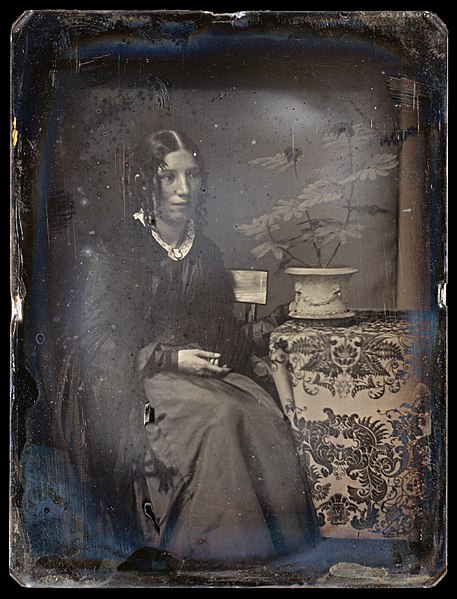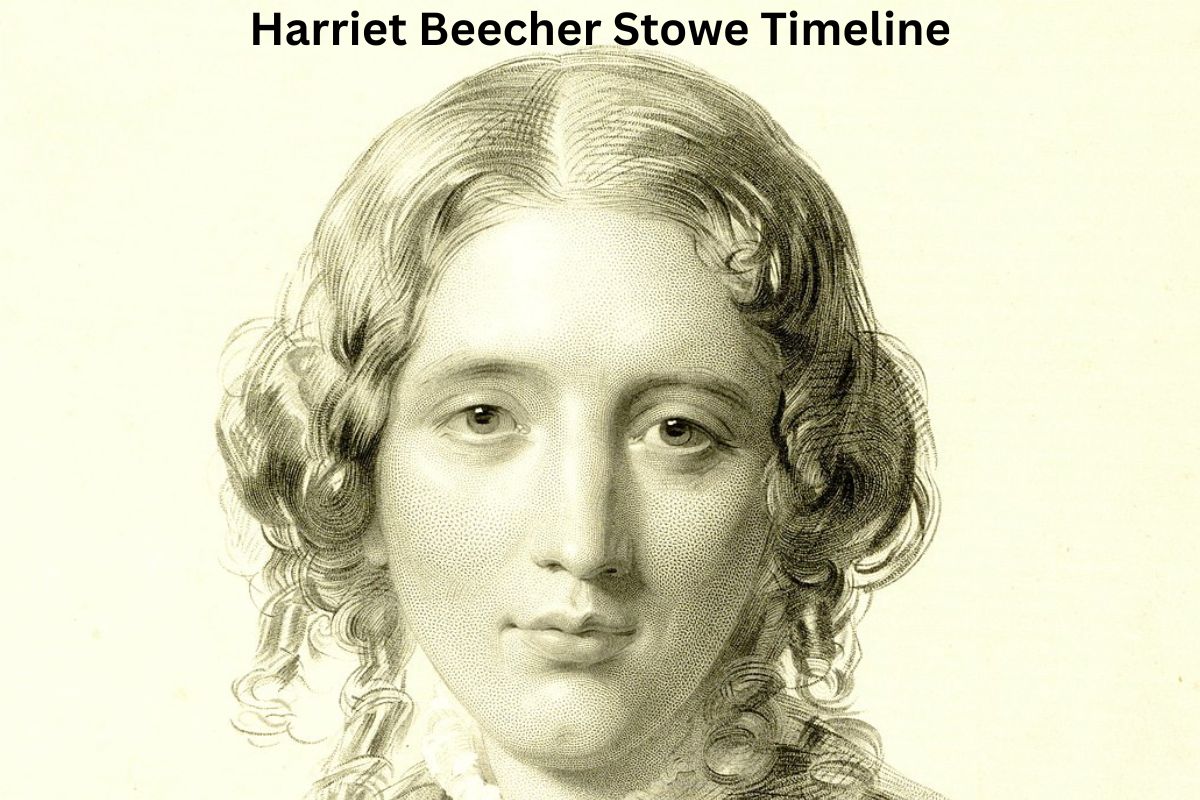Harriet Beecher Stowe (1811-1896) was an influential American author and abolitionist. Born into a prominent family, Stowe’s upbringing instilled in her a strong sense of social justice.
She rose to prominence with the publication of her groundbreaking novel, “Uncle Tom’s Cabin” (1852), which shed light on the horrors of slavery and played a pivotal role in shaping public opinion.
Stowe’s writings and activism contributed significantly to the abolitionist movement and the fight against racial injustice.
Throughout her life, she continued to write and advocate for social causes, leaving a lasting legacy as one of the most impactful figures in 19th-century American literature.
| Year | Event |
|---|---|
| 1811 | Born on June 14 in Litchfield, Connecticut |
| 1836 | Married Calvin Ellis Stowe |
| 1849 | Published her first novel, “The Mayflower” |
| 1850 | Published “Uncle Tom’s Cabin” |
| 1852 | Traveled to Europe and wrote “Sunny Memories of Foreign Lands” |
| 1856 | Published “Dred: A Tale of the Great Dismal Swamp” |
| 1862 | Son dies in the Civil War, leading to increased political activism |
| 1869 | Published “The Minister’s Wooing” |
| 1870 | Published “Oldtown Folks” |
| 1873 | Published “Pink and White Tyranny” |
| 1896 | Died on July 1 in Hartford, Connecticut, at the age of 85 |
Timeline of Harriet Beecher Stowe
1811 – Born on June 14 in Litchfield, Connecticut
Harriet Elisabeth Beecher was born into a prominent and religious family on June 14, 1811. She was the seventh of 13 children born to Reverend Lyman Beecher and Roxana Foote Beecher.
Also Read: Harriet Beecher Stowe Accomplishments
Her father, Lyman Beecher, was a renowned Congregationalist minister and an influential figure in the abolitionist movement. Growing up in a household that emphasized education and moral values, Harriet developed a strong sense of social justice and a passion for writing.

1832 – Moves to Cincinnati, Ohio
In 1832, Harriet moved to Cincinnati, Ohio, with her family. Her father, Lyman Beecher, had been appointed as the president of Lane Theological Seminary.
In Cincinnati, Harriet was exposed to the realities of slavery as she witnessed enslaved people being transported along the Ohio River.
Also Read: Harriet Beecher Stowe Facts
These experiences deeply affected her and influenced her later writings on the subject. It was during her time in Cincinnati that Harriet began to develop her literary skills and engage in social activism.
1849 – Published her first novel, “The Mayflower”
In 1849, Harriet Beecher Stowe published her debut novel, “The Mayflower.” Although the novel did not achieve significant commercial success or widespread recognition, it marked the beginning of her career as a writer.
“The Mayflower” explored themes of family, religion, and moral values, which would continue to be central to Stowe’s subsequent works.
While it did not have the same impact as her later novel, “Uncle Tom’s Cabin,” it demonstrated her storytelling abilities and laid the foundation for her future literary achievements.
1850 – Published “Uncle Tom’s Cabin,” which became a bestseller and sparked controversy
In 1850, Harriet Beecher Stowe published her most famous and influential work, “Uncle Tom’s Cabin.” The novel depicted the harsh realities of slavery, focusing on the lives of enslaved individuals and the cruelty they endured.
“Uncle Tom’s Cabin” quickly gained widespread attention and became a bestseller, selling over 300,000 copies within the first year of its publication. The book had a profound impact on the abolitionist movement, as it humanized enslaved individuals and exposed the moral injustice of slavery.
While praised by abolitionists, it also faced severe backlash from supporters of slavery and sparked heated debates across the United States.
1852 – Traveled to Europe and wrote “Sunny Memories of Foreign Lands”
In 1852, Harriet Beecher Stowe embarked on a trip to Europe with her family. During her travels, she was received with great acclaim and admiration for her anti-slavery novel, “Uncle Tom’s Cabin.”
While in Europe, Stowe documented her experiences in a travelogue titled “Sunny Memories of Foreign Lands.”
The book provided vivid descriptions of the places she visited, including England, Scotland, France, and Italy, and offered insights into European culture and society.
“Sunny Memories of Foreign Lands” was published in 1854 and further enhanced Stowe’s reputation as a talented writer and observer.
1856 – Published “Dred: A Tale of the Great Dismal Swamp”
In 1856, Harriet Beecher Stowe published “Dred: A Tale of the Great Dismal Swamp.” This novel also focused on the theme of slavery and its destructive impact on individuals and society.
“Dred” explored the experiences of enslaved people who had escaped to the Great Dismal Swamp in Virginia, forming their own community and resisting their oppressors.
Although “Dred” did not achieve the same level of popularity as “Uncle Tom’s Cabin,” it still garnered attention and contributed to the ongoing discourse on slavery and racial injustice in the United States.
1862 – Son dies in the Civil War, leading to increased political activism
In 1862, Harriet Beecher Stowe faced a personal tragedy when her son, Captain Henry Ellis Stowe, died while serving in the Union Army during the Civil War.
This loss deeply affected Stowe and fueled her commitment to the abolitionist cause. She became more politically active, using her platform to advocate for the Union’s cause and the emancipation of enslaved individuals.
Stowe corresponded with political figures, including President Abraham Lincoln, discussing the progress of the war and urging further action against slavery. Her personal experience of losing a son in the conflict added emotional weight to her efforts to end slavery and promote social justice.
1869 – Published “The Minister’s Wooing”
In 1869, Harriet Beecher Stowe published “The Minister’s Wooing,” a historical novel set in New England during the Revolutionary War era.
The book explores themes of love, duty, and religious faith, and it delves into the complexities of romantic relationships within a religious context.
“The Minister’s Wooing” received positive reviews for its well-developed characters and Stowe’s ability to capture the social and religious atmosphere of the time.
1870 – Published “Oldtown Folks”
In 1870, Harriet Beecher Stowe published “Oldtown Folks,” a semi-autobiographical novel set in New England. The book portrays the lives of ordinary people in a small town, drawing on Stowe’s own childhood experiences and observations.
“Oldtown Folks” explores themes of family, community, and social change, offering a nuanced and nostalgic depiction of 19th-century New England life.
1873 – Published “Pink and White Tyranny”
In 1873, Harriet Beecher Stowe published “Pink and White Tyranny,” a satirical novel that critiques societal expectations placed on women and the constraints of Victorian gender roles.
The book examines the dynamics of marriage and the limited options available to women seeking independence and fulfillment. “Pink and White Tyranny” showcases Stowe’s ability to tackle social issues with wit and humor.
1896 – Died on July 1 in Hartford, Connecticut, at the age of 85
On July 1, 1896, Harriet Beecher Stowe passed away at her home in Hartford, Connecticut. She was 85 years old at the time of her death.
Stowe left behind a powerful literary legacy and a profound impact on American society. Her works, particularly “Uncle Tom’s Cabin,” continue to be recognized as important contributions to the abolitionist movement and the advancement of social justice.
